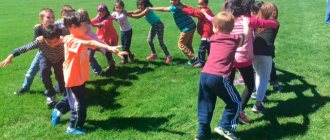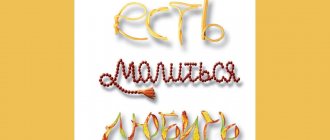Author: Nikiforidis
27 October 2021 08:04
Community: Psychology
Tags: Alan Pease Joe Navarro Paul Ekman Henrik Fexeus books nonverbal communication book selections psychology
32020
10
If you were missing a book that would help you understand body language, then here is a whole selection of good books. Each of them has its own twist: the subtleties of negotiations, communication with a partner, identifying lies. What interests you?
“Speak for sure!”, Alan Pease, Barbara Pease
0
See all photos in the gallery
Written by international experts in "communication technology," this book will teach you how to separate politeness from the grain of truth and decipher nonverbal cues. You will be able to appreciate your partner’s sincerity and correctly interpret his thoughts, and the ability to give compliments and listen carefully will allow you not only to achieve success in your personal life, but will also raise you to the top of your professional career and make you a “master of conversation.”
PREFACE
It is well known how difficult it is to learn a foreign language. How much effort and time do you need to spend? But there is one language on earth that is accessible and understandable to everyone - this is the language of facial expressions and gestures, which we use every moment of our lives. This language is also called a non-verbal method of communication (as opposed to verbal - verbal), or sign language.
From a scientific point of view, “a gesture is any sign produced by the head, hand, or body that expresses emotion or conveys information.” “Gesture language is a system of signs carried out by conventional gestures and used for linguistic communication along with or instead of auditory speech. It is used by peoples of primitive culture, as well as developed cultures in multilingual conditions, in connection with ancient everyday rituals, as well as for muteness.” “A gesture is an action that sends a visual signal to the observer.”
People control their bodies and know how to hide their feelings, some good, some bad, but everyone, without exception, supplements their speech with gestures. And not only when, due to muteness, age or illness, they cannot speak. Nonverbal language can sometimes express (or hide) even more information and in a more emotional way than speech. This is done both involuntarily - gestures of jubilation, despair, hopelessness, unexpected surprise and many others - and quite meaningfully, in order to emphasize this or that voiced thought or, on the contrary, so as not to betray one’s true feelings.
If we do not always speak, then we constantly make movements, without even noticing it. Here two lovers meet in public, they are silent or say ordinary phrases, but their looks and gestures do not even speak, but shout about love. Only this scream is not heard by others. The eyes sparkle, the cheeks turn pink, the smile stretches the lips, the hands tremble, the bodies reach out to each other - only a blind person would not understand this! Or you are discussing some problem with colleagues and suddenly realize that you don’t consider any of the points of view correct.
However, for various reasons, you do not dare to express your opinion and begin to automatically remove an invisible thread or fluff from your clothes, while looking not into the eyes of your colleagues, but somewhere on the floor. This is a gesture of disapproval, condemnation, which, without meaning to, you performed. If at that moment there was a person next to you who understood sign language, he would definitely “read” your silent answer.
Some professions require mastery of your body and body language. For example, the profession of an actor, dancer. Watching ballet dancers, one can only be surprised and amazed at how expressive and flexible their movements and their body language are. Everything is clear without words. What about theater and film artists? The playing of the same role by different actors is a clear example of how such different images are created with the same text. Each actor has his own personality, his own body language.
There are other sign languages: dactylology (manual alphabet) - a language for the deaf and dumb; slang and antisocial gestures with the help of which criminal and antisocial individuals communicate; cult and ritual gestures that are used in various rituals; harsh languages of primitive peoples, used, for example, in hunting, so as not to frighten off animals; family and group languages - gestures used only in a given family or group of like-minded people.
At first glance, gestures do not represent anything complicated. Indeed, many gestures are understandable on an intuitive level: when denying something, a person shakes his head from side to side; confused, raises his eyebrows and opens his eyes wide; grieving, he slouches.
But there are many gestures that cannot be understood without special study. Having arrived in a foreign country and seeing a familiar gesture performed by the aborigines, you decipher it according to your national and cultural tradition, but the gesture may have a completely different meaning than you attributed to it.
For example, in Russia, a thumbs up means praise, “excellent,” and in Bangladesh it means a desire to have fun with a woman. Or, seeing a smile on a friend’s face, you think that he is friendly towards you, but if you look closely at the upper half of his face and do not notice that after the eyes widen, they briefly squint, then the smile is fake.
Studying various means of nonverbal communication (postures, gestures, facial expressions, temporal-spatial organization of communication) will help you understand not only the people around you, but also yourself. Knowing and being able to apply these skills in nonverbal communication, you will easily and pleasantly communicate with other people. We hope that our book will help you with this.
Body language and body language is a way of communication that can become accessible and understandable to everyone who reads this book. By studying postures, gestures, facial expressions, you can better understand the people around you, learn about their true attitude towards you, their hidden inclinations and true intentions. By skillfully using sign language, you will easily communicate with people and will be able to establish closer and more trusting relationships with loved ones, family and work colleagues.
"Negotiation. The Complete Course by Gavin Kennedy
0
A book about negotiating in any situation. This is a fun, accessible and reliable guide to the best work in negotiation training. Using his 25 years of experience as a negotiator and business coach, Kennedy critically examines the most popular negotiation practices, helping the reader adopt the most effective ones. The book talks about how to prepare for an upcoming meeting, how to advantageously present your point of view, how to negotiate and how to make the negotiation process mutually beneficial for all parties involved.
How to read a person. Facial features, gestures, postures, facial expressions
We publish a full transcript of the lecture by philosopher, logician, social thinker, professor at Moscow State University Alexander Zinoviev
, given on September 16, 2005 at the OGI Street club as part of the “Public Lectures “Polit.ru” project.
Alexander Alexandrovich Zinoviev is one of the largest Russian thinkers of the twentieth century, the author of the social bestsellers “Yawning Heights”, “Homo Soveticus”. Alexander Zinoviev was born in 1922 in the Kostroma region into a large peasant family. In 1939 he entered the Moscow Institute of Philosophy, Literature and History. There, by his own admission, he joined a student “terrorist group” that aimed to kill Joseph Stalin. He was arrested, but escaped from investigation and was hiding from the authorities. His military service, where he left in 1940, saved him from re-arrest. He went through the Great Patriotic War - he started in a tank regiment, ended in attack aviation, and was awarded orders and medals for military services. After the war, he graduated from the Faculty of Philosophy of Moscow State University, while simultaneously studying mechanics and mathematics. In 1954, as part of a discussion on the problems of logic at the Faculty of Philosophy of Moscow State University, Alexander Zinoviev, together with Georgy Shchedrovitsky, Boris Grushin and Merab Mamardashvili, founded the famous Moscow Logical Circle (MLC), which gave rise to several real, non-dogmatic, powerful and original philosophical traditions.
In 1976, Alexander Zinoviev published in the West the book “Yawning Heights,” a critical study of the Soviet social system, written in artistic form. He was expelled from the party, expelled from his job, expelled from the country, deprived of citizenship, all academic degrees, titles, awards, including military ones. From 1978 to 1999, Alexander Zinoviev lived in Munich, engaged in scientific and literary work. He, unlike almost the entire domestic and emigrant intelligentsia, responded to perestroika with sharp criticism (soon calling it “catastrophe”), perceiving this process as an attempt to realize the historical defeat of Russia, to impose Westernization and outdated social models on it. In 1999, Alexander Zinoviev returned permanently to Moscow, where he teaches at the Faculty of Philosophy of Moscow State University. Now he is one of the most thorough critics of the post-Soviet social structure of Russia, engaged in logical and sociological studies of history and ideology.
Among the lecturer's main books: “Philosophical problems of many-valued logic” (1960); “Propositional logic and the theory of inference” (1962); "Complex Logic" (1970); "The Logic of Science" (1972); "Yawning Heights" (1976); “Communism as Reality” (1980), “Bright Future” (1978), “On the Eve of Paradise” (1979); "Homo soviticus" (1982); "Para bellum" (1982); “The Flight of Our Youth” (1983); "Go to Calvary" (1985); "Live" (1989); "West" (1995) and "Global Man" (1997).
Initially, it was assumed that the lecture would be entitled “The Social System of Post-Soviet Russia,” but Alexander Alexandrovich shortened the title to “Post-Sovietism,” or, even shorter, “Psism.” Perhaps one of the most interesting motives of the lecture and discussion was the description of the history of the emergence and collapse of the USSR as the internal drama of European civilization: “The words “capitalism” and “democracy” are ideological empty words. The real West is completely different. And the social system that now exists there is already a super-society. The system is of the same type as in the Soviet Union, but under different conditions.”
“The art of manipulation. How to read other people’s thoughts and control them unnoticed,” Henrik Fexeus
0
Reading minds is as natural as eating or breathing. In fact, we all read minds, we just do it unconsciously. Some people do it better, some worse, some use this talent, some don’t. But I believe we can all develop this natural ability. We know that we read minds, we know how to do it, which means we can do it better.
Introduction to Lie Detection
At one time, the topic of detecting lies became quite discussed thanks to the popularity of the series “Lie to me” created by S. Baum (in Russian translation “Theory of Lies.” The characters in the series masterfully investigate crimes based on observations of the behavior of suspects. The main character is a prototype of a real person, a professor Psychology from the University of California Paul Ekman, who is known for his work in the field of detecting deception using microexpressions, voice changes, vegetative signs (blushing, sweating, rapid breathing), a lie detector.
At the same time, many experts note that the series is largely idealized and hyperbolized. Psychologists who study deception argue that there is no reliable way to catch someone lying because lying is not a distinct psychological process with its own unique behavioral indicators. This aspect plays an important role, because it is difficult to determine when a person is lying and when he is telling the truth, but is nervous due to pressure and greater psychological stress. It is very difficult to recognize the edge, this should be kept in mind when resorting to the methods described below. Remember:
1. No method gives a 100% guarantee of detecting that a person is lying.
2. Do not directly accuse others of lying. Draw your own conclusions. The accusation is based on facts, not conjecture. Excessive suspicion (unless, of course, this is a professional skill) is fraught with difficulties in the communication process.
3. Nonverbal signals are not always confirmation of lies. In some cultures, staring at someone is considered bad manners and can ruin relationships.
4. Many physiological elements by which it is advised to determine a lie, for example, increased sweating or dry throat, may be present in a person due to individual characteristics.
M.L. Butovskaya
LANGUAGE OF THE BODY:
NATURE AND CULTURE
(evolutionary and cross-cultural foundations of human nonverbal communication)
Scientific editor:
Ph.D. biol. Sciences E.A. Gorokhovskaya
Reviewers:
doctor ist. Sciences A.P. Buzhilova.
prof.. doctor of biology Sciences Zh. I. Reznikova
The book was written and published with funds from a grant-award from the Foundation for Support of Russian Science, under the program “Outstanding Scientists, Young Doctors and Candidates.”
PREFACE
Man is the only species on Earth with developed speech and rational activity, who has created a material and spiritual culture and artificial habitat that has no analogues in the animal world. But even in modern conditions of a big city, he remains a biological creature, a mammal, with a number of common behavioral and nonverbal communication features similar to other higher primates.
Human body language plays almost a central role in social communication and significantly determines the individual success of each individual, whether we are talking about modern industrial society or the traditional cultures of hunter-gatherers, early farmers and nomadic pastoralists. Body language, at least the language of gestures, has occupied the minds of scientists since the era of Ancient Rome, as evidenced by Cicero’s work “On the Orator”. Professional and targeted study of various aspects of body language in anthropology, ethology and psychology began around the 60s of the 20th century (D. Morris, J. Fast, E. Hall, etc.), and since then the study of human nonverbal communication has been carried out at an active pace and is widely covered in popular literature (I. Eibl-Eibesfeldt, I. Altman, K. Anderson, M. Argyle, K. Grammer, R. Dunbar, P. Ekman, K. Izard, etc.). Theoretical knowledge about nonverbal behavior is widely used in practice in special psychotraining programs aimed at increasing self-esteem and individual success and in collective training in the workplace aimed at increasing work efficiency (Pease, 1992; Birkenbill, 1997; Pease, Pease, 2000) . Research by ethologists and communication specialists devoted to the analysis of the nonverbal behavior of political figures has received wide coverage in the USA, Great Britain, Germany, and France and has served as the basis for applied developments in the field of political advertising (Frey, 1998; Schubert, 1998).
In recent years, interest in body language has increased exceptionally in our country, as evidenced by the large number of translated and domestic publications on this topic (Pease, 1992; Birkenbill, 1997; Kreidlin, Krongauz, 1997; Stepanov, 2001; Fast, 1997; Hall, 1997; Kreidlin, 2002, etc.). Various courses of lectures for students of anthropologists, cultural scientists, psychologists, sociologists, managers, and political scientists are devoted to the theoretical and practical aspects of human nonverbal communication. Such courses include “Theory and Practice of Intercultural Communication”, “Human Ethology”, “Fundamentals of Nonverbal Communication”, “Semiotics”, “Ethnopsychology”, “Fundamentals of Gender Psychology”, “Social Psychology” and many others.
The reasons for the enormous interest in research on human nonverbal communication become clear if we turn to the data of anthropologists and ethologists, who have established that information transmitted by words makes up only about 7% of the total amount of information received by a person, while nonverbal signals account for 93 % (facial expressions, postures, gestures, touches, smells account for up to 55%, and the vocal paralinguistic component accounts for up to 38%). On average, a person speaks only 10-11 minutes a day, with the verbal component making up only 35% of the semantic load, and the non-verbal component much more - 65%.
Of course, specific information is more often conveyed in words, but in all cultures (we will discuss this in more detail below) there are a lot of gestures that replace words. In addition, gestures and facial expressions that accompany speech serve as a reliable source of information about the speaker’s attitude to the topic of what was said, as well as about the listener’s reaction to the information received. When interpreting the interlocutor’s speech, the volume, timbre of the voice, its pitch, intonation, rate of speech, logical emphasis on words, as well as the characteristic accent are also taken into account. The speaker's voice allows us to determine his age, gender, level of education, belonging to a certain social class and ethnic origin (Wainwright, 2002). By the speaker's voice, listeners judge the degree of his individual attractiveness.
The science that studies body language is called kinesics (the term was proposed by R. Birdwhistell in 1952). There are two fundamentally different points of view on the nature of human nonverbal communication. One of them belongs to specialists in the field of social and human sciences (R. Birdwhistell is one of them), who defend the thesis of the complete social determination of body language. Within this approach, it is assumed that sign communication is formed within a specific culture and is linguistically mediated. The other belongs to a group of scientists, including specialists in the field of natural sciences - ethologists, primatologists, physiologists, and psychologists. I. Aibl-Eibesfeldt, P. Ekman, J. Van Hooff and other authors draw attention to the biological foundations of human behavior and provide fairly well-founded arguments in favor of the presence of a whole class of non-verbal universals - movements performed in a similar way and equally understandable to the most people different cultures. Modern data from the field of nonverbal communication indicate that both approaches have a right to exist. Human body language, according to ethologist-psychologist R. Hind and anthropologist W. Reynolds, is the result of close interaction between biology and culture, and any ignoring of this fact leads to a distortion of reality. We will adhere to the latter point of view.









